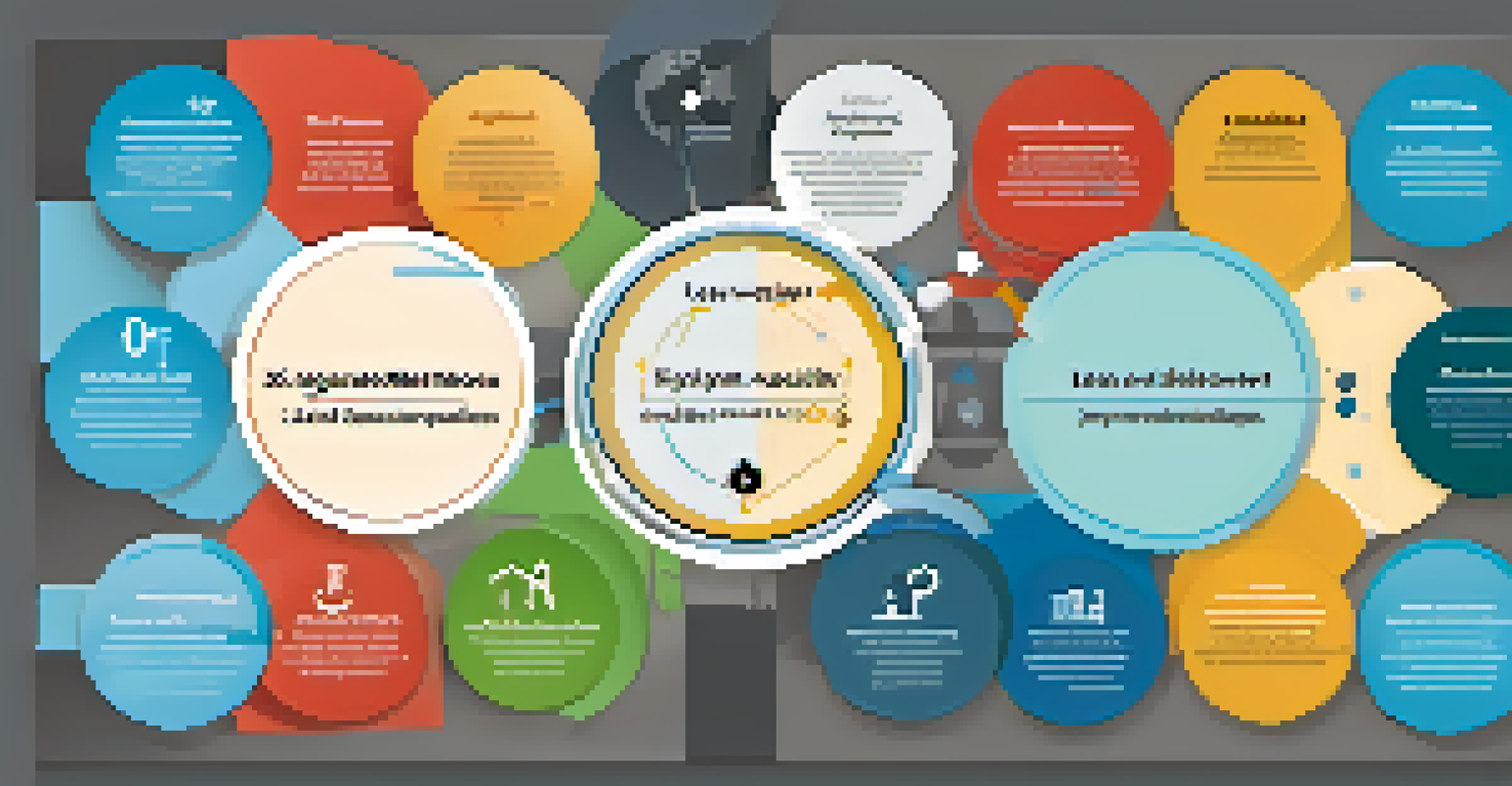Quality Improvement Tools: Lean and Six Sigma in Healthcare

Understanding Lean and Six Sigma in Healthcare
Lean and Six Sigma are two powerful methodologies used to enhance quality in healthcare. Lean focuses on eliminating waste and increasing efficiency, while Six Sigma aims to reduce variation and improve processes. Together, they create a comprehensive approach to quality improvement that addresses both time and quality in patient care.
Quality is not an act, it is a habit.
For example, Lean might streamline the patient intake process by minimizing unnecessary steps, while Six Sigma could analyze and reduce errors in medication administration. These methodologies help healthcare organizations operate more efficiently, which ultimately leads to better patient outcomes.
Understanding these tools is crucial for healthcare professionals, as they provide a structured framework for identifying problems and implementing effective solutions. By integrating Lean and Six Sigma, healthcare providers can enhance their service delivery and increase patient satisfaction.
Key Principles of Lean in Healthcare
The core principle of Lean is to 'value the patient' by removing anything that does not add value to their care. This means examining each step in a process to identify waste, such as long wait times or redundant paperwork. Lean encourages teams to focus on value creation and streamline processes to benefit patients.

For instance, a hospital may adopt Lean by reorganizing its supply chain to ensure that necessary materials are available right when they are needed. This not only reduces wait times but also minimizes costs associated with excess inventory.
Lean Eliminates Waste in Healthcare
Lean focuses on streamlining processes by removing non-value-added steps, enhancing efficiency and patient care.
By fostering a culture of continuous improvement, Lean enables healthcare teams to adapt quickly and respond to changing patient needs. Regular training and engagement of staff in Lean practices are key to sustaining these improvements over time.
Key Principles of Six Sigma in Healthcare
Six Sigma focuses on reducing defects and improving quality through data-driven decision-making. It uses a set of statistical tools to analyze processes and identify areas where errors occur. The goal is to achieve near perfection, with fewer than 3.4 defects per million opportunities.
In the end, the customer (patient) doesn't care how much you know until they know how much you care.
An example of Six Sigma in action might be a surgical department that uses data analysis to identify patterns in post-operative infections. By investigating these patterns, the team can implement targeted interventions to reduce infection rates significantly.
The systematic approach of Six Sigma not only boosts the quality of care provided but also enhances operational efficiency. By training staff in Six Sigma methodologies, healthcare organizations can cultivate a workforce that is skilled in problem-solving and process improvement.
The Importance of Data in Quality Improvement
Data plays a crucial role in both Lean and Six Sigma methodologies. Accurate data collection and analysis enable healthcare organizations to understand where problems exist and how to address them. By harnessing data, teams can make informed decisions that lead to effective quality improvements.
For example, a clinic might track patient wait times and use this data to identify peak hours and adjust staffing accordingly. This proactive approach can lead to shorter wait times and increased patient satisfaction.
Six Sigma Reduces Errors with Data
Six Sigma employs data-driven analysis to identify and reduce defects, aiming for near perfection in healthcare processes.
Moreover, continuously monitoring data allows organizations to sustain improvements over time. Implementing regular reviews of performance metrics ensures that any new issues can be identified and addressed swiftly, maintaining a high standard of care.
Integrating Lean and Six Sigma for Maximum Impact
Integrating Lean and Six Sigma can help healthcare organizations achieve a more holistic approach to quality improvement. By combining the strengths of both methodologies, teams can tackle waste and variation simultaneously. This dual approach amplifies the benefits, leading to significant enhancements in patient care.
For instance, a hospital may implement Lean to streamline its processes while also applying Six Sigma to reduce errors in patient records. This comprehensive strategy not only improves efficiency but also enhances accuracy and patient safety.
Successful integration requires training staff in both methodologies and promoting a culture of collaboration. By fostering teamwork and open communication, organizations can leverage the full potential of Lean and Six Sigma.
Challenges in Implementing Quality Improvement Tools
While Lean and Six Sigma offer numerous benefits, implementing these methodologies in healthcare can be challenging. Resistance to change is a common hurdle, as staff may be accustomed to traditional practices. Overcoming this resistance is crucial for successful adoption.
Moreover, healthcare organizations often face limitations in resources and time, making it difficult to fully commit to quality improvement initiatives. It’s essential to prioritize training and ongoing support to help staff navigate these changes effectively.
Integrating Lean and Six Sigma
Combining Lean and Six Sigma methodologies allows healthcare organizations to tackle both waste and variation for improved patient outcomes.
Addressing these challenges requires strong leadership and a clear vision for quality improvement. By demonstrating commitment and providing necessary resources, organizations can cultivate a positive environment for implementing Lean and Six Sigma.
Measuring Success in Quality Improvement Initiatives
Measuring the success of Lean and Six Sigma initiatives is vital for understanding their impact on healthcare quality. Organizations should establish clear metrics to evaluate progress, such as patient satisfaction scores, error rates, and process efficiency. These metrics provide valuable insights into the effectiveness of implemented changes.
For example, a hospital may track the reduction in patient wait times after implementing Lean strategies. By quantifying these results, the organization can assess the direct benefits of their quality improvement efforts.

Regular evaluation and feedback loops are essential to sustain improvements. Organizations should continue to analyze data and adjust strategies as needed to ensure ongoing success in their quality improvement journey.